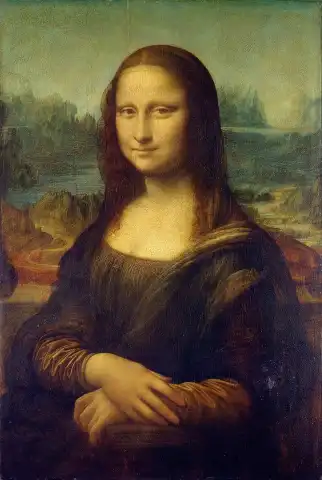

Hand painted reproductions of Tsukioka Yoshitoshi
Tsukioka Yoshitoshi: Master of Japanese Ukiyo-e and Samurai Imagery
Tsukioka Yoshitoshi (1839–1892) was one of the last great masters of the ukiyo-e genre, a form of Japanese woodblock printing. Yoshitoshi’s works, known for their dramatic flair, vivid color, and strong emotional expression, had a significant impact on the evolution of Japanese printmaking in the late 19th century. His powerful depictions of samurai warriors, beautiful women, ghosts, and supernatural events have cemented his place as one of the most influential printmakers in Japanese history. Yoshitoshi’s art blends traditional themes with bold modern techniques, making him a pivotal figure during the transitional period of Japanese art from the Edo to the Meiji era.
Early Life and Training
Tsukioka Yoshitoshi was born on April 30, 1839, in Edo (modern-day Tokyo), Japan. He was the son of a samurai family, though he would later abandon his original path to follow his passion for art. Initially, he studied under the ukiyo-e artist Utagawa Kuniyoshi, one of the leading figures in ukiyo-e during the Edo period. Kuniyoshi's influence can be seen in Yoshitoshi’s early work, especially in his dynamic depictions of warriors and historical figures.
Yoshitoshi’s early career was marked by struggles, both personal and professional. His youth was tumultuous, and he faced challenges in gaining recognition in the competitive world of ukiyo-e. However, over time, Yoshitoshi’s distinctive style began to emerge, blending the traditions of ukiyo-e with his own innovative techniques.
Style and Technique
Yoshitoshi is celebrated for his mastery of the woodblock print, a medium that he helped push to new heights during his career. His work is known for its strong, often violent imagery and dramatic use of color. Unlike many of his contemporaries, who focused on the beauty and refinement of daily life, Yoshitoshi was drawn to darker, more intense subjects. His prints often depicted violent battles, bloody samurai confrontations, and supernatural creatures, which set him apart from other ukiyo-e artists of the period.
Yoshitoshi's technique was innovative, especially in his use of vibrant, expressive colors. He often incorporated a unique range of hues that emphasized the emotional intensity of his subjects, from deep reds and blacks to softer blues and purples. His compositions are known for their boldness and dynamic energy, often using exaggerated perspectives and dramatic angles to heighten the sense of action and movement.
One of the hallmarks of Yoshitoshi's prints is his portrayal of the human form. His depictions of figures, particularly warriors and women, are rendered with a sense of fluidity and grace, yet they often possess a haunting quality that reflects the underlying emotional tension of the subject. Yoshitoshi’s sense of drama, particularly in his depictions of battle scenes, has earned him a reputation as a master of emotional depth and narrative tension in the ukiyo-e genre.
Themes and Significance
While Yoshitoshi's works encompass a wide variety of subjects, some of his most famous prints feature samurai warriors, mythical creatures, and supernatural events. Many of these themes are rooted in Japan’s rich historical and cultural traditions, as well as its folklore.
One of Yoshitoshi's most renowned series is One Hundred Aspects of the Moon (1885–1892), which features stunning depictions of legends, myths, and historical events connected to the moon. In this series, he explored themes of death, vengeance, and the supernatural, presenting a complex interplay of emotions through both his composition and his subject matter. The series is often regarded as Yoshitoshi's magnum opus, displaying his mastery of woodblock print techniques and his ability to convey narrative depth.
Yoshitoshi’s fascination with samurai imagery is also central to his body of work. The samurai, often portrayed as larger-than-life figures, embody the ideals of honor, courage, and sacrifice. Yoshitoshi’s samurai prints, such as those from the Warriors of the Tokugawa Era (1865), depict warriors in dramatic and heroic poses, evoking the violence, valor, and tension of Japan’s feudal past. These works represent a departure from the more delicate and elegant portrayals of samurai in earlier ukiyo-e, embracing a raw emotional intensity that reflects the changing political and social landscape of Japan during the Meiji era.
Another major theme in Yoshitoshi’s work is the supernatural. Many of his prints depict ghosts, demons, and spirits drawn from Japanese folklore. These figures, often eerie and otherworldly, were rendered with an incredible sense of detail and dramatic flair, and they were meant to evoke feelings of unease and fear. Yoshitoshi’s ghostly images were influenced by the rise of "yōkai" (supernatural creatures) in Japanese art, blending traditional beliefs with the artist’s own sense of gothic horror.
Achievements and Recognition
Yoshitoshi was well-regarded during his lifetime for his skill and imagination, and he gained fame among collectors and art enthusiasts both in Japan and abroad. Despite facing financial difficulties throughout his career, he achieved significant success in the late 19th century, particularly during the Meiji era, when Japanese art was experiencing a transformation in response to the rapid modernization of the country.
His works were exhibited in international expositions, such as the World’s Columbian Exposition in Chicago (1893), where they gained widespread recognition in the West. Yoshitoshi's influence was felt not only in Japan, but also in Europe, where his prints were collected by art dealers and museums. In particular, his samurai prints, which presented dramatic battle scenes and portraits of heroic figures, became highly sought after by collectors of Japanese art.
Despite his popularity, Yoshitoshi’s later years were marked by personal struggles, including bouts of illness and financial troubles. He died on June 9, 1892, at the age of 53, but his work left an indelible mark on the world of ukiyo-e and Japanese art.
Legacy
Tsukioka Yoshitoshi's legacy is immense. He is often considered the last great master of ukiyo-e and one of the most important artists in the history of Japanese printmaking. His work bridged the old and new, combining traditional Japanese aesthetics with a modern, emotional intensity that captured the spirit of the late Edo and Meiji periods.
Yoshitoshi’s influence can be seen in both traditional Japanese printmaking and in the broader history of modern art. His dynamic compositions and dramatic narratives have inspired generations of artists, including those working in the fields of illustration, animation, and contemporary graphic design. His ability to blend beauty with raw emotional power has made his work enduringly popular with collectors and art lovers.
Today, Yoshitoshi’s works are held in major collections worldwide, including the Museum of Fine Arts in Boston, the Tokyo National Museum, and the British Museum. His legacy lives on through his prints, which continue to captivate audiences with their extraordinary blend of tradition, innovation, and emotion.
Where to Find Reproductions of Tsukioka Yoshitoshi’s Art
Reproductions of Tsukioka Yoshitoshi’s artworks can be found at POD, where collectors and enthusiasts can purchase high-quality prints of his powerful and evocative works. These reproductions allow individuals to experience the dramatic and emotional depth of Yoshitoshi's art in their own homes, offering a timeless glimpse into the world of samurai, ghosts, and Japanese folklore.
Imagine owning an original-style painting by one of the greatest artists in history. At POD, we offer you the chance to make this dream a reality. Each canvas is faithfully reproduced down to the smallest detail, allowing you to experience the beauty of the artist’s vision in your own home.
Our reproductions are crafted by experienced painters using the finest materials and time-honored methods. We are committed to delivering works of exceptional quality that will inspire and bring joy to your family for generations to come.




